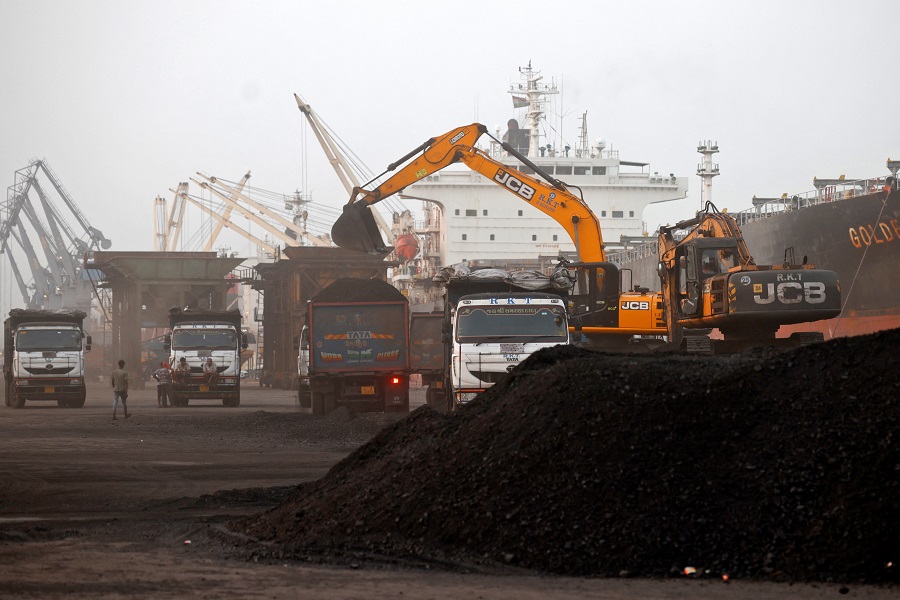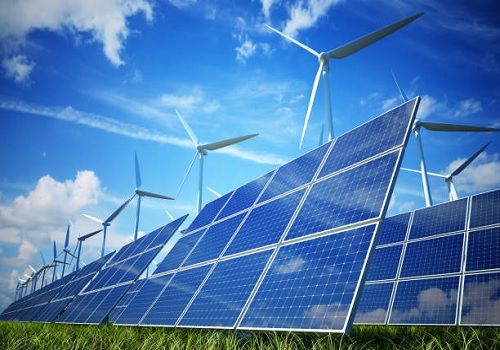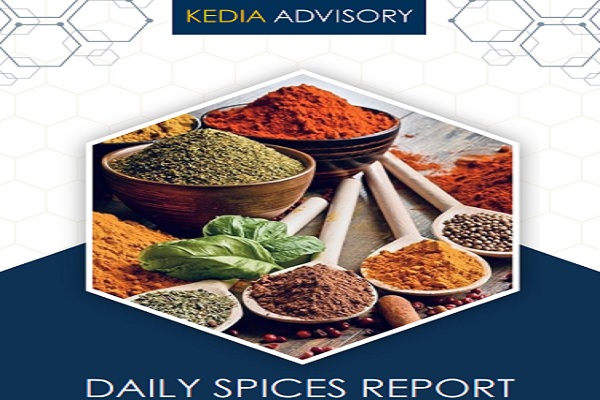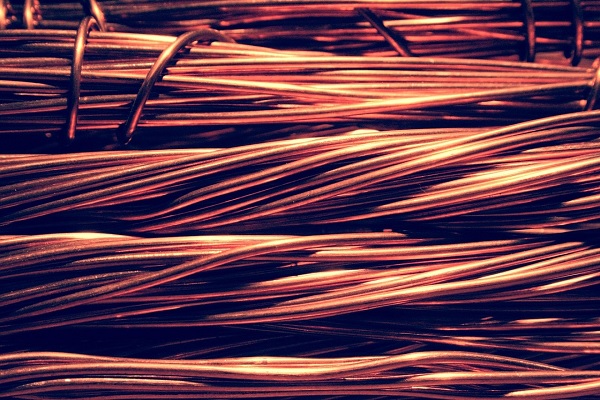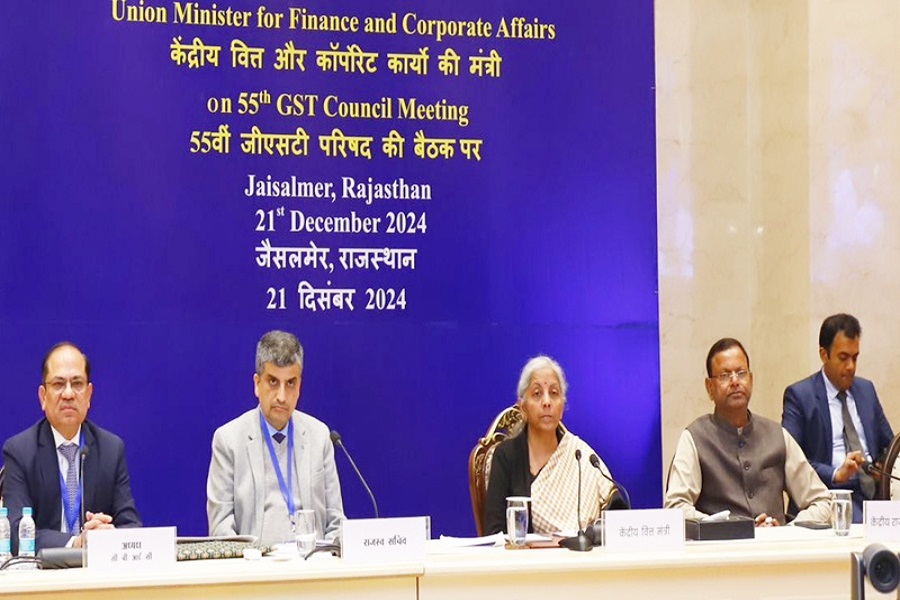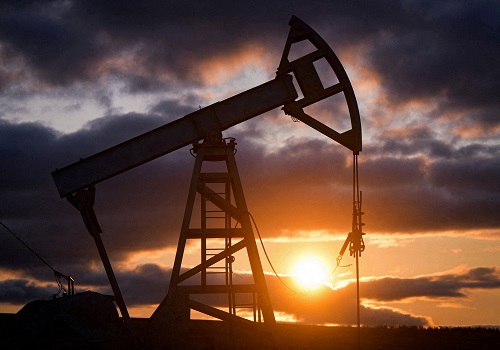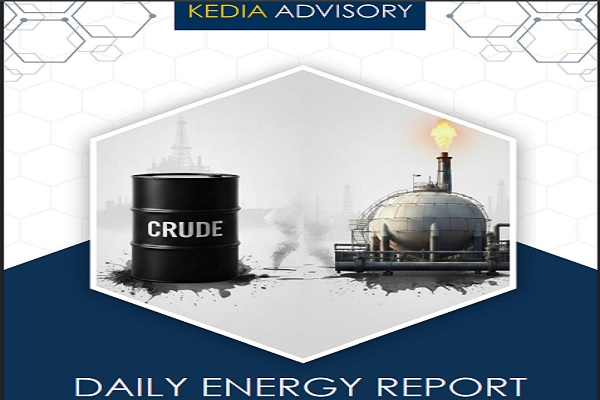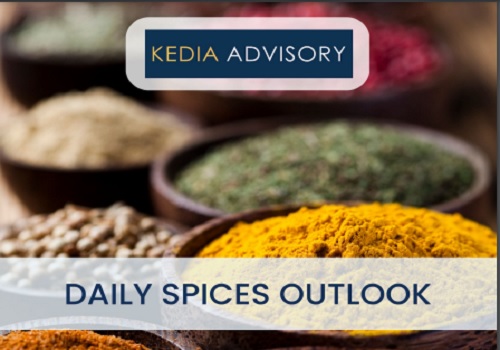Aluminium trading range for the day is 252.2-256. - Kedia Advisory
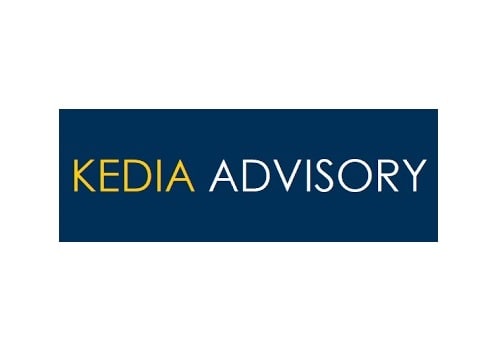
Gold
Gold prices rose 0.33% to settle at 101,798 on MCX after the United States imposed higher tariffs on imports of 1-kg and 100-ounce gold bars, widening the price spread between New York futures and spot prices by over $100. The move, effective from July 31, could impact major exporters such as Switzerland, Brazil, and India. Additional support came from weaker US payroll data, which boosted expectations of a Federal Reserve interest rate cut, with CME’s FedWatch Tool showing a 91% probability of a 25-bps reduction next month. China’s central bank continued its gold-buying spree for the ninth straight month in July, increasing reserves to 73.96 million fine troy ounces, valued at $243.99 billion. However, physical gold demand in key Asian hubs eased as higher prices dampened buying interest, prompting some holders to book profits. In India, dealers offered gold at a $9 discount to a $2 premium over domestic prices, while in China, bullion traded at par to a $2 premium. According to the World Gold Council, global gold demand, including OTC trading, rose 3% YoY to 1,248.8 tonnes in Q2 2025, driven by a 78% jump in investment demand. Demand for gold bars climbed 21%, offsetting weaker coin demand, while jewellery consumption fell 14% to its lowest since Q3 2020. Central bank purchases dropped 21% to 166.5 tonnes, while recycling supply rose 4% to 347.2 tonnes. Fresh buying was seen with open interest up 5.05% to 16,561 contracts. Support is at 101,360, with a break lower opening 100,925. Resistance is at 102,240, and a move above could test 102,685.
Trading Ideas:
* Gold trading range for the day is 100925-102685.
* Gold makes an all-time high after a report that US had imposed tariffs on imports of 1-kg gold bars.
* The price spread between New York futures and spot prices widened by more than $100.
* China's central bank added gold to its reserves in July, its ninth consecutive month of purchases.
Silver
Silver prices rose 0.52% to settle at 114,881, supported by growing expectations of U.S. interest rate cuts and safe-haven demand triggered by newly imposed U.S. tariffs. Softer U.S. labor data, including higher weekly jobless claims and a weaker-than-expected nonfarm payrolls report, reinforced market bets on a September rate cut, with another possible move in December. Political developments added to the dovish tone, as President Donald Trump nominated Stephen Miran to the Federal Reserve Board and reports suggested Fed Governor Christopher Waller, known for his accommodative stance, could be tapped as Fed Chair. On the investment front, silver’s retail demand showed mixed trends. Europe’s recovery, which began in late 2024, has continued, although volumes remain below the highs of 2020–2022. In India, retail investment demand rose 7% year-on-year in the first half of 2025, supported by firm price expectations. Silver ETPs saw net inflows of 95 Moz in H1 2025, pushing global holdings to 1.13 Boz—just 7% below the February 2021 record. On the supply-demand side, the market is set for its fifth straight annual deficit in 2025, with The market is witnessing short covering, with open interest falling 3.56% to 15,459 contracts alongside a 595 price gain. Support is seen at 114,345, with further downside possible towards 113,805. Resistance is at 115,650, and a breakout above could pave the way for testing 116,415.
Trading Ideas:
* Silver trading range for the day is 113805-116415.
* Silver rose as expectations for US interest rate cuts and uncertainty from new tariffs drove demand for precious metals.
* Initial jobless claims in the US rose by 7,000 from the previous week to 226,000 in the last week of July.
* Christopher Waller seen as potential Fed Chair, reinforcing dovish policy outlook.
Crude oil
Crude oil prices edged higher by 0.11% to settle at 5,610, supported by supply concerns after U.S. President Donald Trump warned of wider secondary sanctions on buyers of Russian oil. OPEC’s output rose in July by 270,000 barrels per day (bpd) to 27.38 million bpd, driven by increases from the UAE and Saudi Arabia. However, gains were partly offset by Iraq’s additional cuts and supply disruptions from drone attacks on Kurdish oilfields. Saudi Arabia’s June supply was revised up by 50,000 bpd to 9.36 million bpd, while Iraq continued reducing production to comply with OPEC+ quotas. Market sentiment was mixed as OPEC+ confirmed plans to raise production by 547,000 bpd in September, fully reversing its largest tranche of output cuts earlier than planned. This move, alongside a separate output increase for the UAE, amounts to about 2.5 million bpd, or roughly 2.4% of global demand. U.S. Energy Information Administration data showed crude inventories falling by 3 million barrels to 423.7 million, well above expectations for a smaller draw. Gasoline stocks dropped by 1.3 million barrels, while distillates declined by 565,000 barrels, against forecasts of a build. Refinery runs increased by 213,000 bpd, with utilization rates up 1.5 percentage points. The market is seeing short covering, with open interest falling 9.09% to 11,635 contracts while prices gained 6. Support is pegged at 5,527, with a break below potentially leading to 5,443. Resistance stands at 5,679, and a move above could push prices towards 5,747.
Trading Ideas:
* Crudeoil trading range for the day is 5443-5747.
* Crude oil gains amid supply concerns as Trump warned of wider secondary sanctions for buying Russian oil.
* OPEC pumped 27.38 million barrels per day last month, up 270,000 bpd from June's revised total, the survey showed.
* Trump said China, the largest buyer of Russian crude, could be hit with tariffs similar to those levied against Indian imports.
Natural gas
Natural gas prices fell sharply by 2.94% to settle at 260.8, pressured by weaker weather-driven demand despite a smaller-than-expected U.S. inventory build. The U.S. Energy Information Administration reported an injection of just 7 billion cubic feet (bcf) into storage for the week ending August 1 — the smallest build so far this year. This was well below analyst expectations of 15–17 bcf and far less than the five-year average of 29 bcf for the same period. Current inventories stand at 3.130 trillion cubic feet, 4.2% lower than a year ago but still 5.9% above the five-year average. Production in the Lower 48 states eased slightly to 107.8 billion cubic feet per day (bcfd) in early August, just below July’s record 107.9 bcfd. Demand, including exports, is expected to rise from 105.8 bcfd this week to 109.6 bcfd next week, though forecasts have been revised lower from earlier estimates. LNG exports remain robust, averaging 16.1 bcfd in August so far, surpassing July’s 15.5 bcfd and matching April’s record levels. The EIA’s Short-Term Energy Outlook projects U.S. dry gas production to climb from 103.2 bcfd in 2024 to 105.9 bcfd in 2025 and 106.4 bcfd in 2026, while domestic consumption is seen rising to 91.3 bcfd in 2025. The market is under fresh selling pressure, with open interest rising 10.38% to 37,745 contracts as prices fell 7.9. Support is placed at 256.3, with a break below likely to test 251.9. Resistance is at 268.9, and a move above could open the door for gains towards 277.1.
Trading Ideas:
* Naturalgas trading range for the day is 251.9-277.1.
* Natural gas Natural gas slip as loss of weather-driven demand outweighs the boost from a below-estimate inventory build.
* Natural gas The U.S. Energy Information Administration said energy firms added 7 billion cubic feet of gas into storage.
* Natural gasAverage gas output in the Lower 48 states eased to 107.8 billion cubic feet per day so far in August.
Copper
Copper prices rose 0.97% to settle at 889.3, supported by ongoing supply concerns and stable demand indicators despite rising inventories. China's July trade data was broadly neutral, showing higher imports of both unwrought copper and copper ores, indicating strong domestic consumption and robust production activity. LME copper inventories continued their rebound, hitting a near two-year high last week, while COMEX inventories climbed to 261,180 metric tons — the highest since February 2004. Goldman Sachs expects LME copper prices to dip to $9,550/t in August but maintains a long December 2025 COMEX-LME arbitrage position, citing potential tariff impacts. On the supply side, Chile’s Codelco reported a 9% output rise in H1 2025, and Antofagasta posted an 11% increase in production to 314,900 tonnes. The International Copper Study Group reported a 97,000-tonne surplus in May, compared to an 80,000-tonne deficit in April, with global refined copper output at 2.40 million tonnes and consumption at 2.30 million tonnes. China’s copper concentrate imports rose 9% in July to 2.56 million tonnes, while unwrought copper imports increased 3.4% to 480,000 tonnes, though the pace slowed from June due to price pressures and supply constraints. The market is witnessing short covering, with open interest down 11.8% to 6,375 contracts as prices gained 8.55. Support is at 883.9, with a break lower opening 878.5, while resistance is at 892.2, above which prices could test 895.1.
Trading Ideas:
* Copper trading range for the day is 878.5-895.1.
* Copper prices edge higher amid persistent supply concerns and the normalization of LME inventory levels.
* China's July trade data was broadly neutral for copper prices, with imports of both unwrought copper and copper ores rising.
* Copper inventories in warehouses monitored by the Shanghai Futures Exchange rose 12.9% from last Friday.
Zinc
Zinc prices gained 0.6% to settle at 270.1, supported by a weaker U.S. dollar and expectations of improved demand from China. July trade data showed Chinese exports beating forecasts as manufacturers took advantage of the fragile tariff truce with the U.S. Additionally, zinc supply concerns persisted as Chinese smelters faced pressure to cut production, with capacity exceeding demand and some output in South China disrupted by heavy rains. However, upside momentum was capped by lingering demand concerns, with China’s manufacturing activity contracting in July, new export orders falling for the fourth straight month, and factories reducing jobs. On the supply side, zinc inventories on the Shanghai Futures Exchange rose 6.8% from last Friday. Globally, production was hit as Teck Resources’ Red Dog Mine output dropped 20% in Q1, and Australia’s Nyrstar cut annual production by 25% due to ore shortages. China’s announcement of a CNY 1.2 trillion hydroelectric project is expected to boost steel demand and related zinc use in galvanization. The International Lead and Zinc Study Group reported a 44,100-tonne global deficit in May, compared to a 17,300-tonne surplus in April. For January–May, there was a surplus of 88,000 tonnes, down from 214,000 tonnes last year. The market is in short covering mode, with open interest down 0.32% to 3,161 contracts and prices up 1.6. Support is at 268.7, with a break lower opening 267.3, while resistance lies at 271, above which prices could test 271.9.
Trading Ideas:
* Zinc trading range for the day is 267.3-271.9.
* Zinc gains supported by a weaker U.S. dollar and expectations of better demand from China.
* China's exports beat forecasts in July, as manufacturers made the most of a fragile tariff truce between Beijing and Washington to ship goods.
* Zinc inventories in warehouses monitored by the Shanghai Futures Exchange rose 6.8% from last Friday.
Aluminium
Aluminium prices rose 0.43% to settle at 254.15, supported by expectations of U.S. interest rate cuts and stronger economic data from China. Optimism was further lifted after Beijing pledged to stabilize industrial growth, while traders kept a close watch on developments in China-U.S. trade talks. Although the Chinese government stopped short of announcing direct consumer stimulus, it reaffirmed its commitment to loose fiscal and monetary policies, alongside infrastructure-focused manufacturing projects, including the CNY 1.2 trillion hydroelectric dam that is expected to boost demand for industrial metals. Supply concerns also underpinned prices, with European markets already facing tight availability due to sanctions on a major Russian producer. China’s aluminium production in June 2025 fell 3.23% month-on-month, though operating capacity remains at high levels in July. On an annual basis, June output rose 3.4% to 3.81 million tonnes, while production for January–June totaled 22.38 million tonnes, up 3.3% year-on-year. On the trade front, China’s July exports of unwrought aluminium and related products rose to 542,000 tonnes from 489,000 tonnes in June. In Japan, Q3 aluminium premiums dropped 41% to $108 per tonne amid subdued demand, while port inventories fell 4.3% in June to 316,700 tonnes. The market is in short covering mode, with open interest declining 2.87% to 4,088 contracts while prices gained 1.1. Immediate support lies at 253.2, with a break below exposing 252.2. Resistance is seen at 255.1, and a move above this level could open the way for a test of 256.
Trading Ideas:
* Aluminium trading range for the day is 252.2-256.
* Aluminium prices gains bolstered by hopes of U.S. interest rate cuts and upbeat economic data in China.
* Aluminium inventories in warehouses monitored by the Shanghai Futures Exchange fell 3.3% from last Friday.
* China exported 542,000 tonnes of unwrought aluminium and aluminium products, in July, up from June's 489,000 tonnes.
Turmeric
Turmeric prices slipped 0.4% to settle at 13,032, pressured by an increase in acreage driven by favourable rains during the current sowing season. Daily arrivals rose to 13,660 quintals from 11,940 quintals in the prior session, reflecting slightly higher availability. Preliminary estimates suggest turmeric acreage for 2024–25 may rise 15–20% compared to last year, with the area under cultivation recorded at 3.30 lakh hectares—10% higher than the previous season’s 3 lakh hectares. However, production is unlikely to increase proportionally due to the impact of untimely rains, which may reduce productivity. New crop yields are expected to be 10–15% lower, particularly in the Nanded region, where small rhizomes and crop rots have been reported. In the Duggirala market, fresh arrivals are enjoying strong buyer demand, with premium prices for new stock over older inventory, driven by superior quality. Trade volumes remain robust at 1,000–1,200 bags daily, with about 50–55% of the season’s crop already traded. Harvesting is ongoing, and active arrivals are expected to continue in the coming weeks. On the export front, turmeric shipments during April–May 2025 rose 8.37% to 34,162.28 tonnes from 31,524.59 tonnes a year earlier. May exports jumped 10.28% year-on-year and 28.41% from April 2025 levels. The market is witnessing long liquidation, with open interest falling 5.94% to 8,150 contracts while prices dropped 52. Support is seen at 12,962, with a break below potentially testing 12,892. Resistance is pegged at 13,100, and a move above could open the path towards 13,168.
Trading Ideas:
* Turmeric trading range for the day is 12892-13168.
* Turmeric prices dropped amid increase in acreage.
* Turmeric acreage is expected to increase by 15-20% this season, supported by low competitive crop prices.
* In April 2025 around 14,956.80 tonnes were exported as against 14,109.10 tonnes in April 2024 showing a rise of 6%.
* In Nizamabad, a major spot market, the price ended at 13821.3 Rupees dropped by -0.13 percent.
Jeera
Jeera prices slipped 0.4% to settle at 18,840, pressured by weak domestic and export demand following the end of the retail season. Traders cited continued inactivity from foreign buyers and comfortable supply levels as key reasons for the decline. Farmers still hold around 20 lakh bags of cumin, but with only 3–4 lakh bags likely to be traded before the season ends, an estimated 16 lakh bags may be carried forward. Production for the current season is expected to match last year’s levels due to favourable crop conditions, though export demand remains subdued. India’s jeera output for 2025 is pegged at 90–92 lakh bags versus 1.10 crore bags last year, with Gujarat expected to produce 42–45 lakh bags and Rajasthan 48–50 lakh bags. Globally, adverse weather has reduced production estimates in China to 70–80 thousand tonnes from earlier projections of 1 lakh tonnes. Syria’s output is forecast at 9–10 thousand tonnes, Turkey at 10–11 thousand tonnes, and Afghanistan at 10–12 thousand tonnes. Jeera exports during April–May 2025 fell sharply by 27.07% to 42,925.74 tonnes from 58,860.98 tonnes a year earlier. However, May 2025 exports rose 11.26% year-on-year to 23,206.16 tonnes and jumped 17.68% from April 2025 levels. In Unjha, a major spot market, prices ended at 19,390.85, down 0.56%. The market is witnessing long liquidation, with open interest plunging 19.54% to 3,126 contracts while prices dropped 75. Support is at 18,520, with a break below likely to test 18,190. Resistance is at 19,070, and a move above could push prices towards 19,290.
Trading Ideas:
* Jeera trading range for the day is 18190-19290.
* Jeera prices settled down due to weak domestic post retail season.
* Only 3-4 lakh bags are expected to be traded by the end of the season, leaving a carry-forward stock of about 16 lakh bags
* Total arrivals witnessed a marginal increase to 12,000 bags (55 kg each) as against 11,800 bags on the previous day.
* In Unjha, a major spot market, the price ended at 19390.85 Rupees dropped by -0.56 percent.
Views express by all participants are for information & academic purpose only. Kindly read disclaimer before referring below views

